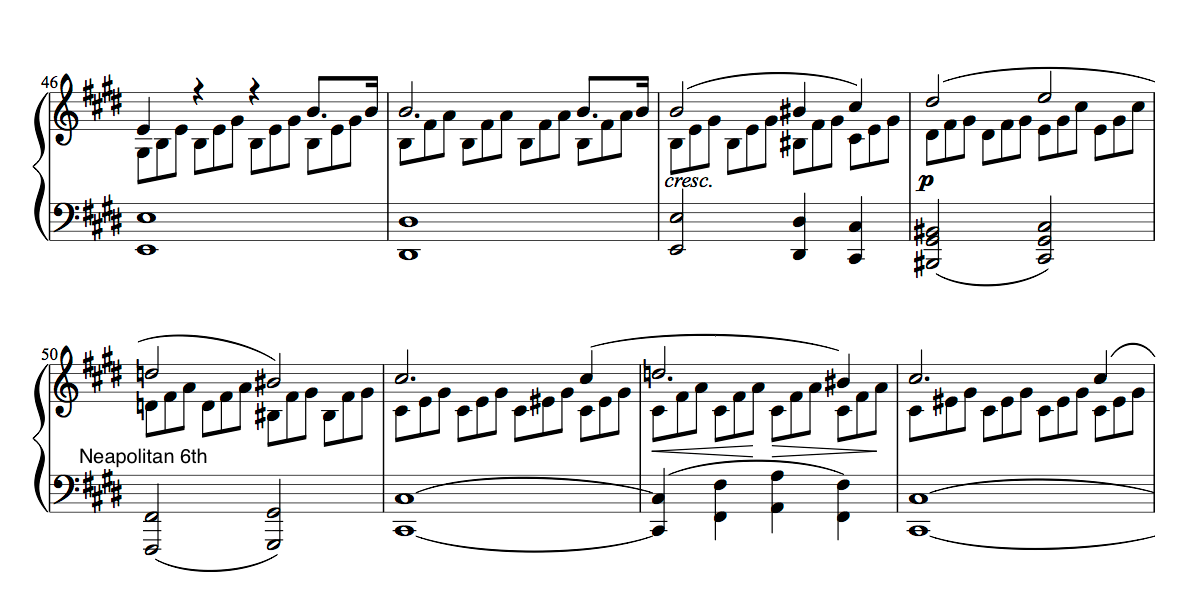C2A | Chord of the neapolitan 6th
What is the chord of the neapolitan 6th?
- The chord of the Neapolitan 6th is based on the major triad on the flattened supertonic degree of the scale, and then used in its first inversion.
- Therefore, if you’re in the key of C minor, the flattened supertonic will be D♭ and the notes of the triad would be D♭ F A♭. Convert that triad to the first inversion, and the notes will be (from the bass) F A♭ D♭, the chord of the Neapolitan 6th.
- The numeral '6th' derives from the fact that the triad is in its first inversion (visit the chapter on triadic inversions). Therefore, the root of the flattened supertonic triad Db is now an interval of a 6th above the lowest note, F.
Remember that the key is C minor.
the tonic triad
the mellowed supertonic triad (♭)
the mellowed supertonic triad in its first inverstion

the root is D♭
The triad root (D♭) is now a 6th interval above the lowest note (F). It is referred to as a ♭II6 triad.
The triad is much more coherent if you listen and understand the context in which the chord appears. It’s usually part of a chordal sequence. In the video, you will see and listen to the following chordal sequence: ♭II - i64 - V - i
Below, you will see two sets of chordal sequences, the second sequence omitting the i64.
Study the following two sequences. You might be able to understand the chords better by playing them on a keyboard or by listening to them. The key is C minor.

Try this one too.

- The chord is often used in works that are in a minor key. Since it’s such a chromatic chord, it very often suits the mood of minor tonality – often creating a dark, rather exotic atmosphere.
- It can also be used as a pivot chord to go from one key to another, and because of its chromatic properties, it can propel the tonality from the home key to a much more distant one.
Listening to the neapolitan 6th chord
Click on the video below to hear a clear example of this chord. It comes from the first movement of the Piano Sonata no. 14 in C# minor, op.27, no. 2 by Beethoven (Moonlight).
- Listen to the whole of the first movement. The score given in this unit starts to coincide with 03:51 in the vide
- The Neapolitan 6th is heard in bar 50. (F#/A/D).
- The key is now E major in bar 46, the relative major. It modulates back to the tonic, C# minor in bars 48-49. Can you work out therefore the root of the chord of the flattened supertonic and why the chord in b.50 is called the Neapolitan 6th?
- The Neapolitan 6th plays an important role by securing and stabilizing the tonality back in C# minor, the tonic or home key
